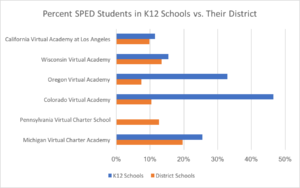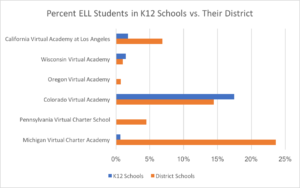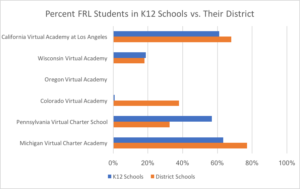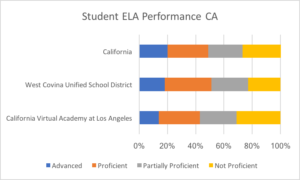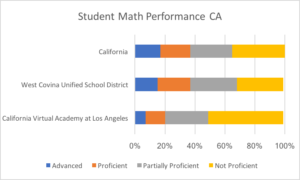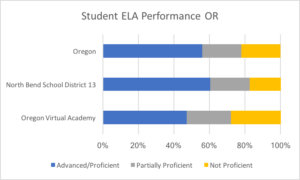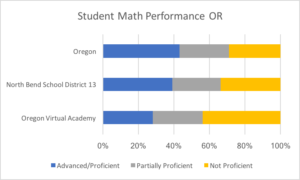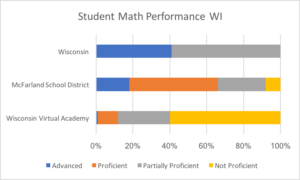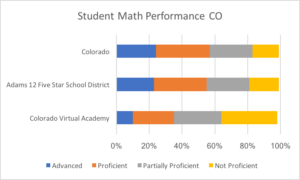The Opposite of TFA: A National Teacher University to Build the Teaching Profession
Tom Chu and Billy Roberts
Executive Summary
This policy report outlines a proposal for the National Teacher University (NTU), including both a graduate education program and an undergraduate program, which would be fully funded by the federal government and run by professional educators, researchers, and academics. NTU is designed to functionally resemble the U.S. military academies, with free tuition for all students and a mandatory five year public school teaching commitment after graduation. Specifically, NTU would ensure the presence of three critical aspects of teacher preparation: (1) content knowledge, (2) pedagogical methods and theory, and (3) teaching experience and mentorship.
NTU would benefit U.S. education in the following ways:
- Build the teaching profession by ensuring teacher commitment.
- Help increase teachers’ influence in policy by increasing respect for educators.
- Combat teacher shortages and attrition.
- Attract more teachers of color and low-income teachers.
- Establish a model of exemplary teacher training.
Although implementation would be quite difficult, especially given the current political climate, the benefits to our education system would far outweigh any startup or maintenance costs.
Introduction
Most of us remember having a teacher who truly changed us. Maybe that teacher was special because they got along with you on a personal level; they understood you. Maybe that teacher was special because they showed you what was so interesting about a subject you had never before enjoyed. Maybe that teacher was special simply because they made class a place where you felt comfortable exploring and being yourself. Such an educational experience can have a truly profound impact on the trajectory of a student’s life, and it is not one that should be reserved for only a small subset of students with access to good teachers. As the United States searches for educational reforms that will revitalize our nation’s schools, it is imperative that teacher preparation programs occupy the forefront of reform efforts. If our schools are to provide as many students as possible with transformative educational experiences, teachers must be adequately trained in extensive teacher education programs. In the preface to her book Powerful Teacher Education: Lessons from Exemplary Programs, Linda Darling-Hammond (2012) writes that “one of the most damaging myths prevailing in American education is the notion that good teachers are born and not made.” It is time that the federal government act to dispel this falsehood, advocating for a norm of highly and traditionally trained teachers through the creation of its own teacher preparation program. The national teacher university outlined in this proposal is meant to accomplish exactly that–and we believe that it represents an important step toward ensuring quality teachers for all.
Background
Education policy discourse in the U.S. over the last three decades has increasingly focused on teacher quality and accountability. Around the time of the publication of A Nation at Risk in 1983, teacher quality and preparation entered the spotlight of policy talk and have since received significant political attention (Lewis & Young, 2013). In 1996, the National Commission on Teaching & America’s Future (NCTAF) published an influential report entitled What Matters Most: Teaching for America’s Future, outlining a vision of reform for teacher preparation programs, among other measures, to improve teacher quality (Hunt, 1996). Teacher quality was once again highlighted in No Child Left Behind (NCLB) (2001), which stressed teacher accountability and included provisions that teachers must be “highly qualified” in the subject areas they teach (Redding & Smith, 2016). A wealth of research demonstrates the importance of teacher quality and, specifically, teacher preparation (Darling-Hammond, 2010; Clotfelter, Ladd & Vigdor, 2007; Goldhaber & Brewer, 2000).
Yet, within this broad trend of increasing focus on teacher quality, competing visions for change in the realm of teacher preparation have developed, forming a “professionalization versus deregulation debate” (Lewis & Young, 2013, p. 209). One school of thought holds that “deregulating” the teaching field, by increasing Alternative Certification (AC) pathways, will allow experienced professionals or bright, elite young college graduates with content expertise to enter the teaching profession (Lewis & Young, 2013). Advocates of deregulation originally supported TFA, Relay Graduate School of Education (Relay GSE), and other AC measures because of a belief that these programs would help to alleviate teacher shortages (Kopp, 2001). Their logic held that despite limited preparation, having AC teachers would be much better than having no teachers at all in areas experiencing shortages. It is only more recently that TFA and AC supporters have begun to assert that much of the content of TPPs is superfluous or could be dramatically expedited, and teachers prepared through AC, because of their superior pedigrees, will actually outperform traditionally prepared teachers (Brewer, 2016).
On the other side, Linda Darling-Hammond, NCTAF, and other scholars and organizations advocate for the professionalization of teaching through increased clinical preparation and the standardization of preparation programs (Darling-Hammond, 2005; Sutcher, Darling-Hammond, & Carver-Thomas, 2016; Hunt, 1996). Proponents of professionalization emphasize measures such as new teacher mentoring and induction, in-classroom experience, observation of master teachers, exposure to pedagogical theory and methods, and university-based Traditional Preparation Programs (TPP) (Darling-Hammond, 2005; Darling-Hammond, 2010; Hunt, 1996). They believe that by better preparing teachers and creating a culture of dedication to the profession, TPPs can reduce teacher attrition and improve improve teacher preparedness and efficacy.
Proposal
In light of this ongoing debate, we add our voices to those in favor of professionalization, as we propose creating the National Teacher University (NTU), a teacher preparation university fully funded by the federal government. NTU would offer a full undergraduate liberal arts curriculum with an additional focus on pedagogy, developmental psychology, educational theory, and student teaching. This undergraduate curriculum would be coupled with a two-year graduate program in education, which would be open to both NTU undergraduates and students from other undergraduate institutions. Attending NTU would be free for all students, and they would receive a monthly stipend for their service–similar to how students at the U.S. military academies receive a tuition-free education and a monthly stipend. But also like the military academies, which require post-graduate military service of their students, students who attend NTU would be contractually obligated to teach in U.S. public schools for five years after graduation.
NTU follows the logic of professionalization, emphasizing more rigorous teacher preparation as the means of improving teacher commitment and efficacy. To some extent, comparing between TPPs and AC programs monolithically is ineffective because there is a huge degree of variation within each category, and focusing on the specifics preparation might be more important (Borman, Mueninghoff, Cotner & Frederick, 2009). However, we still advocate for TPPs, because our vision of exemplary teacher preparation, outlined below, includes extensive training not possible in abbreviated AC programs.
Specifically, as a model, NTU would ensure the presence of three critical aspects of teacher preparation: (1) content knowledge, (2) pedagogical methods and theory, and (3) teaching experience and mentorship.
First, content knowledge is crucial in light of evidence that teachers who have a degree in their subject field perform significantly better than those who do not, particularly in math and the sciences (Goldhaber & Brewer, 1996). Undergraduates at NTU would choose to major in a content area such as history or mathematics, while also completing pedagogical coursework and participating in supervised student teaching. Applicants to the graduate program would be required to have completed a major in a content area or have some content knowledge alongside an education major, such as Mathematics Education. Second, exposure to pedagogical methods and theory is vital to teacher preparation. AC programs usually contain pedagogical instruction, but they emphasize more practical concerns such as classroom management, neglecting pedagogical theory and methods (Redding & Smith, 2016). Both the graduate and undergraduate programs would require such theory and methods coursework, including focuses on child development and training in curriculum selection. New teachers who have received such training feel more prepared and have lower attrition rates than those who have not (Darling-Hammond, Chung & Frelow, 2002; Darling-Hammond, 2010; DeAngelis, Wall, & Che, 2013). Third, both the graduate and undergraduate programs would incorporate clinical experience into candidates’ preparation, which has likewise been shown to contribute to feelings of preparedness and low attrition rates (Darling-Hammond et al., 2002; Darling-Hammond, 2010; DeAngelis et al., 2013). The result of these three aspects of teacher preparation would be to create an attitude of reflective development in a teacher candidate’s pedagogy (Borman et al., 2009). Academic content, child development theory, and pedagogical theory would undergird and inform candidates’ practice in the classroom. Their clinical experiences and interactions with mentor teachers would allow them to constantly improve their practice, eventually entering their own classrooms feeling prepared, confident, and committed to the profession.
Ultimately, in recommending that the federal government create a national teacher university, we hope to address the following issues: a lack of respect for the teaching profession and teachers, which undermines efforts at recruiting and retaining good teachers; a shortage of teachers of color and teachers from low-income backgrounds; and an incoherent and eclectic mix of teacher preparation programs nationally, exacerbated by the diverse range of teacher accreditation qualifications between states.
Professionalization of Teaching Culture
First, the establishment of a national teacher university would build respect for teachers and the teaching profession, creating a culture of commitment and combatting teacher turnover. NTU’s university-based nature, post-graduation service requirement and extensive teaching-specific preparation would lead candidates to view teaching as a respected, lifelong profession. NTU’s service requirement, unlike TFA’s, would come with an expectation, communicated through the university’s mission, publications, media, and faculty, that teachers stay in the classroom indefinitely. As demonstrated in Figure 1, TPP graduates, who make up the about 80% of new teachers generally (Redding & Smith, 2016), are already much more likely than TFA teachers to view teaching as a temporary occupation rather than a lifelong career. This is significant because teachers who view teaching as a lifelong commitment have lower turnover rates and usually only leave the profession for unavoidable events in their personal lives, as opposed to complaints regarding working conditions (Hong, 2010; Donaldson & Johnson, 2011). Similarly, multiple studies have reported lower attrition rates for graduates of TPPs than for TFA participants (Redding & Smith, 2016; Heilig & Jez, 2010). By lowering the “barriers to entry,” TFA and other AC programs deprofessionalize teaching, slashing teacher commitment (Brewer, 2016). NTU’s model would have the opposite effect, resulting in more teachers staying in the classroom, improving their pedagogy, and lowering the substantial costs of hiring and inducting new teachers.
Figure 1: New Teachers’ Commitment to the Teaching Profession


Source: Donaldson & Johnson, 2011; Farkas, Johnson & Foleno, 2000.
Additionally, NTU would lower teacher turnover and build the teaching profession by ensuring that new teachers are adequately prepared. As mentioned above, NTU’s focuses on content, pedagogy, and in-classroom experience have all been found to help develop confident, capable teachers who are more committed and less likely to leave the profession (Darling-Hammond et al., 2002; DeAngelis et al., 2013). A survey of new teachers (with five or fewer years of experience) even shows that many would support measures similar to the ones NTU would implement (see Figure 2), further bolstering the case for extensive preparation.
Figure 2: New Teacher Opinions on NTU Policies

Source: Farkas, Johnson & Foleno, 2000.
Increasing Teacher Influence
NTU would help create a more teacher-oriented paradigm of educational reform, building respect for teachers. First, creating a well-prepared teacher corps and building respect for the profession would foster a policy environment where teachers’ opinions are valued. From a review of education policy change in the 20th century, Tyack and Cuban (1995) conclude that because of their unique position on the ground, teachers inevitably shape the implementation of all policy. Therefore, effective education reform must be led by teachers, or at the very least, developed in constant consultation with them. In accordance with this, concrete policies, beyond the scope of this paper, would have to be implemented in the U.S. education landscape more generally in order to formally secure teachers’ influence, but the formation of NTU would go a long way towards shifting social perceptions in favor of such policies. Second, NTU would equip candidates with the knowledge to meaningfully contribute to policy discussions. NTU would not espouse any one specific pedagogy or vision of education, instead promoting a culture of critical dialogue between the competing theories of pedagogy and education policy covered in classes. Teachers would carry their knowledge and this culture of contemplation and critical discussion with colleagues into schools, equipping them to collectively change policy. Using the methods laid out above, NTU would invert the TFA’s paradigm of reform, enabling teachers to lead, instead of enabling future leaders to teach.
Amplifying teachers’ voices would also increase teacher satisfaction and lower attrition, since many teachers who choose to leave the profession complain of low autonomy and influence in their workplace (See Figure 3).
Figure 3: Former Public School Teachers’ Comparison of Teaching to Current Profession

Combatting Teacher Shortages and Teacher Attrition
For multiple reasons, the National Teacher University would draw many applicants and therefore help alleviate predicted teacher shortages. The university’s financial scheme would be a major draw for all prospective students, especially those who are low-income. Financial constraints often discourage students from choosing relatively low-wage jobs such as teaching, and can deter students from going to graduate school and even college (Rothstein & Rouse, 2011; Callender & Jackson, 2005). Fully funding tuition for future teachers would partially alleviate this burden by eliminating student loans and debt from the equation, drawing more teachers into the profession. Similarly funded government military academies like West Point draw over ten thousand applications per year and have acceptance rates around 10% (Princeton Review, 2017). The National Teacher University has the potential to enroll a similar number of students, and by eliminating financial concerns and drawing interest, media attention, and prestige to teaching, NTU would go a long way toward filling the massive incoming teacher shortage predicted by Sutcher, Darling-Hammond, and Carver-Thomas (2016).
Also, as discussed previously, NTU would combat shortages by mitigating teacher turnover in the following ways: it would increase teacher commitment and give teachers extensive preparation and experience, fostering feelings of self-efficacy and preparedness that correlate to retention (Darling-Hammond et al., 2002; Darling-Hammond, 2010; DeAngelis et al., 2013).
Providing Pathways for Teachers of Color
NTU’s financial scheme would also result in increased opportunities for people of color. The two year graduate program would be open to applications from all candidates with a bachelor’s degree in a relevant content area. Thus, the National Teacher University would provide a comprehensive yet financially viable pathway for graduates of color and professionals to enter the teaching profession.
Teachers of color have been shown to benefit the education of all students, and especially benefit students of color, as they can better serve as role models, mentors, and advisors because of shared experiences (Irvine, 1988; Villegas & Irvine, 2010; Griffin & Tackie, 2017). But despite these proven benefits, the U.S. teaching force does not reflect the racial diversity of its students, as Black and Latinx teachers, particularly men, are severely underrepresented (Ingersoll & May, 2014). As Figure 4 indicates, the percentage of public school teachers who are non-white has not increased markedly among any group except Hispanic teachers, despite the growth of AC programs over the same time period.
Figure 4: Percentage of Public School Teachers who Are Teachers of Color

Source: National Center for Education Statistics, 2015
Advocates of AC programs often assert that these kinds of programs are necessary to recruit more teachers of color, providing low-cost pathways for professionals who already hold a bachelor’s degree and want to enter the teaching profession (Madkins, 2011; Whitmire, 2016). However, as one reporter writes, we “can do better for minority teachers than Relay GSE” (Anderson, 2016). Relay GSE, an AC program developed by charter school leaders, and other programs like it, “expedite” coursework on pedagogy, in-classroom experience for teachers, and largely neglect content knowledge, assuming candidates are already proficient (Borman et. al, 2009). This is significant because Ingersoll and May (2014) conclude that shortages of teachers of color persist not because of poor recruitment of teachers of color, but because of poor retention. Teachers who feel unprepared are more likely to leave the profession than well-prepared teachers (Darling-Hammond et al., 2002), so expanding AC programs in the hopes of increasing the percentage of teachers of color would be futile.
Instead, the National Teacher University would provide a comprehensive yet financially viable pathway for people of color to enter the teaching profession. They would receive the in-classroom experience, exposure to pedagogical methods, and mentoring that they, like all teacher candidates, deserve, preparing them for a career in teaching.
Model for Teacher Preparation
Finally, the National Teacher University would be able to serve as a model program for other universities looking for guidance in creating their own curriculum for teacher education. There has recently been significant debate about the quality of traditional teacher preparation programs in the U.S., with the National Council on Teacher Quality issuing a scathing report on their content, structure, and performance (Greenberg, McKee, & Walsh, 2013). This report and others also highlight the large amount of quality variance currently present in preparation programs (both TPP and AC), specifically noting the dearth of high-quality programs and skew towards poor performance. For example, AC programs can vary anywhere from providing teacher candidates with a mere five to six weeks of preparation over a summer, to a two year program with concurrent university coursework, teaching experience, and mentoring (Borman et al., 2009; Darling-Hammond et al., 2002). If the federal government were to establish a nationally sponsored teacher education program, ensuring that its curriculum and philosophy were informed by research and evidence-based practices, it would create a national model for other universities to emulate and look to for reform ideas. Such a centralized structure resembles the system that the education titan Finland currently uses to educate its teachers, wherein universities have autonomy in devising curricula, but the federal government provides them with guiding principles and requirements to ensure consistency and quality outputs (Niemi & Jakku-Sihvonen, 2011).
In addition to modelling an effective teacher preparation program, the National Teacher University would also help to develop a national standard for teacher accreditation. Because of No Child Left Behind (2001) and its Highly Qualified Teachers provision, states across the country lowered their requirements for teachers with content knowledge to become certified and opened the door to a broad array of AC routes (Baines, 2010). This influx of teachers coming from outside the traditional teacher pipeline diluted the quality of teachers in the workforce and has had deleterious effects on education as a whole (Baines, 2010). The National Teacher University would offer a federally endorsed standard for teacher accreditation, which until now has not existed except–marginally–in the vague and inadvertently perverse terms included in the No Child Left Behind Act (2001) and the Every Student Succeeds Act (2015).
Implementation
The National Teacher University would admittedly be a difficult project to develop. Possibly the most daunting challenge is that NTU would require significant startup costs for a campus and facilities, coupled with a large annual budget for faculty and all the expenses of a university. We believe that such a vision is not impossible, though, given the historic success and sustainability of U.S. military academies, with their large budgets, high prestige, and excellent performance. For this to happen, our country simply has to stand by its rhetoric in A Nation at Risk that places education as a national priority on par with defense. Additionally, hiring a full staff of qualified education professors and liberal arts professors for the undergraduate university would be a major challenge. There would likely be high costs associated with recruitment, but, ultimately, we believe that NTU’s model and theory would make it an attractive destination for prominent researchers, academics, and educators. In terms of certification, NTU would have to work with states to offer accreditation to university graduates, which might be difficult in light of the current inter-state variation in certification requirements (Boyd, Goldhaber, Lankford & Wyckoff, 2007). And although we believe that there are sufficient students nationally who would be interested in attending NTU to create a competitive admissions process, it is unclear how much interest the program would draw from applicants in light of the five-year teaching commitment. Of course, the countervailing forces would be the free tuition and the prestige that would ideally accompany a degree from the university.
Critics might object to the fact that the federal government would, in a sense, control the preparation and, therefore, the opinions and mindsets of teachers. In reality, although NTU would be funded by the federal government, the university’s curriculum would be left largely to the discretion of the professional educators, scholars, and researchers who work there, and the curriculum would reflect the most up-to-date and evidence-backed knowledge on effective methods of teacher education. In addition, criticism would be sure to arise from AC and deregulation proponents. Overall, there would evidently be myriad practical, legal, political, and bureaucratic challenges related to the establishment of NTU. But we believe that the benefits to the quality of our nation’s teachers and our education system as a whole make the task worthwhile.
Conclusion
Though NTU would not be a panacea for the myriad issues currently confronting teacher preparation and our education system more broadly, it represents an important shift in federal policy that would signal to the nation a new era has begun for teacher training and the profession as a whole. Beyond its symbolic importance, NTU would help to address issues of equity and access, of professional respect for teachers, and of variation in teacher training and accreditation. It is inexcusable that we know how to train effective teachers, and yet ineffective AC programs are still so prevalent, diluting the quality of teachers in the profession and perpetuating the myth that teaching is a skill that is innate or acquired only through trial and error. Our proposal offers a way to combat these troubling developments, helping to usher in a new norm for teacher training that resembles successful international models.
Every child deserves a teacher well versed in the art of teaching; who is professional and prepared; who understands the nuances of pedagogy and developmental psychology; who is resourceful and knowledgeable in a content area; and who has real teaching experience under a master teacher. These are not elusive qualities vested only in an elite few with some kind of teaching je ne sais quoi. Rather, these skills are honed through years of education and practice. And when they become fully developed, they can equip any teacher with the ability to provide a transformative educational experience.
Acknowledgements
This work would not have been possible without the thoughtful comments of Ben Wong and George Hyunh. We would also like to thank Dr. Mira Debs for her consultation and advice on the project. Their help has been integral to our work, and our project is stronger because of them.
Works Cited
Anderson, L. (Nov. 1, 2016). CT can do better for minority teacher candidates than Relay GSE. CT Viewpoints. Retrieved from https://ctviewpoints.org/2016/11/01/ct-can-do-better-for-minority-teacher-candidates-than-relay-gse/.
Baines, L. A. (2010). The disintegration of teacher preparation. Educational Horizons, 88(3), 152-163.
Borman, K. M., Mueninghoff, E., Cotner, B. A., & Frederick, P. B. (2009). Teacher preparation programs. In International handbook of research on teachers and teaching (pp. 123-140). Springer US.
Boyd, D., Goldhaber, D., Lankford, H., & Wyckoff, J. (2007). The effect of certification and preparation on teacher quality. The Future of children, 45-68.
Boyd, D., Grossman, P., Lankford, H., Loeb, S., & Wyckoff, J. (2006). How Changes in Entry Requirements Alter the Teacher Workforce and Affect Student Achievement. NBER Working Paper No. 11844. National Bureau of Economic Research.
Brewer, T. J. (2016). An examination of Teach For America’s impact on the teaching profession, hiring practices, and educational leadership. Doctoral dissertation, University of Illinois at Urbana-Champaign.
Callender, C., & Jackson, J. (2005). Does the fear of debt deter students from higher education?. Journal of social policy, 34(04), 509-540.
Clotfelter, C. T., Ladd, H. F., & Vigdor, J. L. (2007). Teacher credentials and student achievement: Longitudinal analysis with student fixed effects. Economics of Education Review, 26(6), 673-682.
Darling-Hammond, L., Chung, R., & Frelow, F. (2002). Variation in teacher preparation: How well do different pathways prepare teachers to teach?. Journal of teacher education, 53(4), 286-302.
Darling-Hammond, L. (2005). Teaching as a profession: Lessons in teacher preparation and professional development. Phi delta kappan, 87(3), 237-240.
Darling-Hammond, L. (2012). Powerful teacher education: Lessons from exemplary programs. John Wiley & Sons. Print.
Darling-Hammond, L. (2015). The flat world and education: How America’s commitment to equity will determine our future. Teachers College Press. Print.
DeAngelis, K. J., Wall, A. F., & Che, J. (2013). The impact of preservice preparation and early career support on novice teachers’ career intentions and decisions. Journal of teacher education, 64(4), 338-355. Retrieved from http://journals.sagepub.com/doi/abs/10.1177/0022487113488945.
Donaldson, M., & Johnson, S.M. (Oct. 4, 2011). TFA teachers: How long do they teach? Why do they leave? Education Week. Retrieved from http://www.edweek.org/ew/articles/2011/10/04/kappan_donaldson.html.
Every Student Succeeds Act (ESSA) of 2015, 20 U.S.C. 6301 et seq.
Farkas, S., Johnson, J., & Foleno, T. (2000). A sense of calling: Who teaches and why. Public Agenda. Retrieved from https://www.publicagenda.org/files/sense_of_calling.pdf.
Goldhaber, D. D., & Brewer, D. J. (1996). Evaluating the effect of teacher degree level on educational performance. Westat, Inc.: Rockville, MD. Retrieved from https://eric.ed.gov/?id=ED406400.
Goldhaber, D. D., & Brewer, D. J. (2000). Does teacher certification matter? High school teacher certification status and student achievement. Educational evaluation and policy analysis, 22(2), 129-145.
Goldstein, D. (2014). The teacher wars: A history of America’s most embattled profession. New York: Doubleday Knopf.
Greenberg, J., McKee, A., & Walsh, K. (2013). Teacher prep review: A review of the nation’s teacher preparation programs. Retrieved from https://papers.ssrn.com/sol3/papers.cfm?abstract_id=2354106.
Griffin, A., & Tackie, H. (2017). Through our eyes: Perspectives from black teachers. Phi Delta Kappan, 98(5), 36-40.
Heilig, J.V. & Jez, S.J. (2010). Teach For America: A Review of the Evidence. Boulder and Tempe: Education and the Public Interest Center & Education Policy Research Unit.
Hong, J. Y. (2010). Pre-service and beginning teachers’ professional identity and its relation to dropping out of the profession. Teaching and teacher Education, 26(8), 1530-1543.
Hunt, J. B. (1996). Teaching for America’s future. Report of the National Commission on Teaching and America’s Future, Summary Report, New York.
Ingersoll, R., Merrill, L., & May, H. (2014). What are the effects of teacher education and preparation on beginning teacher attrition?. CPRE Research Reports.
Irvine, J. J. (1988). An analysis of the problem of disappearing Black educators. The Elementary School Journal, 88(5), 503-513.
Kopp, W. (2001). One day, all children…: The unlikely triumph of Teach for America and what I learned along the way. New York: PublicAffairs.
Lewis, W. D., & Young, T. V. (2013). The politics of accountability: Teacher education policy. Educational Policy, 27(2), 190-216.
Madkins, T. C. (2011). The black teacher shortage: A literature review of historical and contemporary trends. The Journal of Negro Education, 417-427.
National Center for Education Statistics (2015). Number and percentage distribution of teachers in public and private elementary and secondary schools, by selected teacher characteristics: Selected years, 1987-88 through 2011-12. Table 209.10. United States Department of Education: Washington, D.C.
National Commission on Excellence in Education. (1983). A nation at risk: the imperative for educational reform: a report to the Nation and the Secretary of Education. United States Department of Education: Washington, D.C.
Niemi, H., & Jakku-Sihvonen, R. (2011). Teacher education in Finland. European dimensions of teacher education: Similarities and differences, 33-51.
No Child Left Behind (NCLB) Act of 2001, 20 U.S.C.A. § 6301 et seq.
Redding, C., & Smith, T. M. (2016). Easy in, Easy out: Are Alternatively Certified Teachers Turning Over at Increased Rates?. American Educational Research Journal, 53(4), 1086-1125.
Rothstein, J., & Rouse, C. E. (2011). Constrained after college: Student loans and early-career occupational choices. Journal of Public Economics, 95(1), 149-163.
Sutcher, L., Darling-Hammond, L., & Carver-Thomas, D. (2016). A coming crisis in teaching? Teacher supply, demand, and shortages in the US. Learning Policy Institute.
The Princeton Review (2017). United States Military Academy. Admissions. Online.
Villegas, A. M., & Irvine, J. J. (2010). Diversifying the teaching force: An examination of major arguments. The Urban Review, 42(3), 175-192.
Whitmire, R. (2016). The founders: Inside the revolution to invent (and reinvent) America’s best charter schools. The 74 Media Inc.

